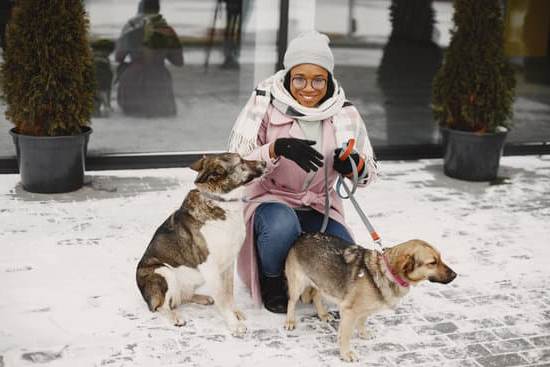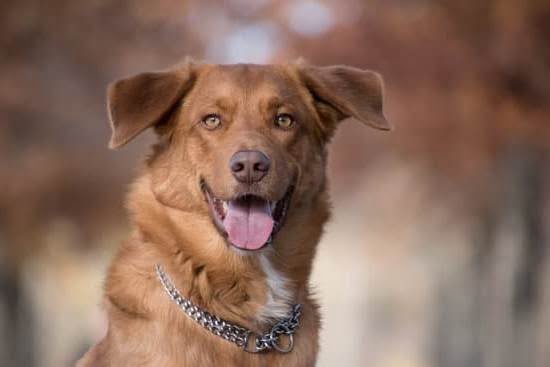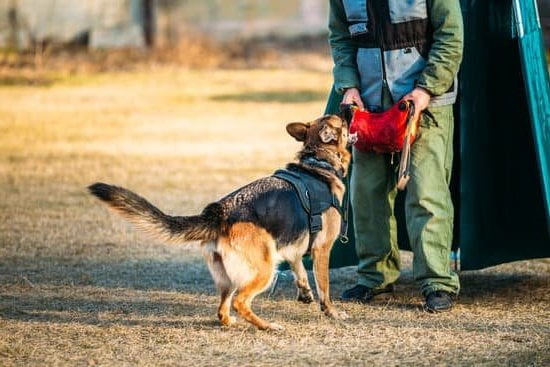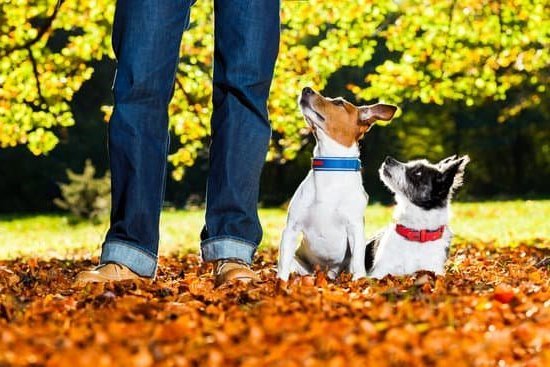When do dogs become house trained is a common question among new dog owners. House training, also known as potty training, is an essential part of welcoming a new furry friend into your home. It can be a challenging process, but with patience and consistency, it can be successfully achieved.
In this article, we will explore the timeline of house training for dogs, signs that indicate your dog is ready for training, and tips for successful house training. We will also discuss common mistakes to avoid, how to handle accidents, and the role of consistency and positive reinforcement in the process.
House training a dog requires understanding their natural instincts and behaviors. It is important to have realistic expectations about the timeline for house training, as well as being prepared to address individual differences based on breed and age considerations. By gaining this understanding, pet owners can set themselves up for success in effectively teaching their dogs appropriate bathroom behaviors.
Throughout this article, we will provide valuable insights and advice on how to navigate the challenges of house training while celebrating the eventual success of having a well-trained dog in your home. Whether you’re welcoming a new puppy or working with an older dog, our comprehensive guide will help you navigate the journey of house training with confidence.
The Timeline of House Training
House training a dog is an essential part of owning a pet, and it is important to understand the timeline of this process. From puppyhood to adulthood, dogs go through different stages in their house training journey.
- Puppyhood (8-16 weeks): During this stage, puppies are still learning bladder control and may need to go potty every 2-3 hours. It’s crucial to establish a consistent schedule for feeding and bathroom breaks.
- Adolescence (4-6 months): At this stage, puppies start to gain more control over their bladder and bowel movements. They can typically hold their bladder for a longer period, usually up to 4 hours.
- Adulthood (6 months and older): By the time a dog reaches adulthood, they should have better bladder control and can hold it for 8 hours or more.
During the house training process, it’s important to keep in mind that individual dogs may progress at their own pace. Factors such as breed and age can also play a role in how quickly a dog becomes fully house trained. Larger breeds may take longer to develop full bladder control compared to smaller breeds. Similarly, older rescue dogs may already have some level of house training while younger puppies will need more time and effort.
It’s crucial for dog owners to be patient and consistent with the training process, regardless of the age or breed of their pet. Remember that positive reinforcement and consistency are key factors in successfully house training your furry friend.
Signs That Your Dog Is Ready for House Training
House training, also known as potty training, is an essential part of welcoming a new dog into your home. It is a process that requires patience, consistency, and positive reinforcement in order to be successful. Understanding the signs that your dog is ready for house training is crucial in effectively beginning this process.
One of the key signs that your dog is ready for house training is when they start to show an understanding of their own elimination habits. This can be observed through behaviors such as sniffing or circling before they eliminate, which indicates that they are beginning to recognize when they need to go potty.
Additionally, if your dog begins to show discomfort or restlessness when they need to eliminate but are unable to do so, this may also indicate readiness for house training.
Another sign that your dog is ready for house training is when they start to display bladder control. Puppies typically have less control over their bladder and bowel movements compared to adult dogs, so it’s important to wait until they develop some level of control before beginning the house training process.
If you notice that your dog is able to hold their pee or poop for longer periods of time, especially during the night or while confined in a crate, this may be a sign that they are ready for house training.
Lastly, a clear indication that your dog is ready for house training is when they consistently keep their sleeping and eating areas clean. Dogs naturally avoid soiling their living spaces, so if your dog shows a preference for eliminating in specific areas away from where they eat and sleep, it may be a good time to start the house training process.
Paying attention to these signs can help you determine the appropriate time to begin house training and set both you and your dog up for success.
Tips for Successful House Training
House training, also known as potty training, is an essential part of a dog’s early development. It teaches them where and when to relieve themselves, and it is an important part of their overall behavior. The key to successful house training is consistency, patience, and positive reinforcement.
The best time to start house training a dog is when they are still puppies. Puppies have smaller bladders and less control over their bodily functions, so they may need more frequent trips outside. Typically, puppies can begin the house training process as early as 12-16 weeks old. However, it’s important to note that the timeline for house training may vary depending on the individual dog.
When do dogs become house trained? This is a common question among new dog owners. On average, most dogs can be successfully house trained by the time they are 6 months old. However, some dogs may take longer than others, especially small breeds or rescue dogs who may have had previous negative experiences with potty training.
Consistency is crucial in the house training process – taking your dog out at the same times every day and praising them when they do their business outside will help reinforce good behavior. It’s also important to closely monitor your dog for signs that they need to go outside and never punish them for indoor accidents. With time, patience, and positive reinforcement, most dogs will become successfully house trained.
| Aspect | Details |
|---|---|
| Best age to start | 12-16 weeks old |
| Average time for success | By 6 months old |
Common Mistakes to Avoid When House Training Your Dog
House training your dog can be a challenging process, and there are common mistakes that many pet owners make when attempting to house train their furry friends. By being aware of these mistakes, you can set yourself up for a more successful house training experience.
1. Inconsistency: One of the biggest mistakes dog owners make when house training their pets is being inconsistent with their methods. It’s important to establish a routine and stick to it. This includes feeding schedules, potty breaks, and positive reinforcement for good behavior. When do dogs become house trained? They become proficient in their potty habits when consistency is maintained.
2. Punishing Accidents: Another mistake to avoid is punishing your dog for accidents in the house. This can create fear and anxiety in your pet, making the house training process even more difficult. Instead, focus on positive reinforcement when your dog eliminates outside or in the designated spot inside.
3. Not Supervising Your Dog: Many pet owners make the mistake of not supervising their dogs during the house training process. It’s crucial to keep an eye on your pet at all times, especially during the early stages of training. This will allow you to quickly redirect them if they show signs of needing to go potty and prevent accidents from happening inside.
By avoiding these common mistakes, you can set yourself and your furry friend up for success during the house training process. Remember that patience and consistency are key when it comes to effectively training your dog for good potty habits.
How to Handle Accidents During the House Training Process
Accidents are a normal part of the house training process when you are training a dog. It is important to remember that dogs do not have full control over their bladders and bowels until they are at least 6 months old. This means that accidents are bound to happen, especially in the early stages of house training.
When accidents occur, it’s crucial to remain calm and avoid punishing your dog. Punishment can cause fear and anxiety in your dog, making the house training process even more challenging. Instead, gently interrupt the accident if you catch your dog in the act and take them outside to the designated potty area immediately. This will help teach them that elimination should occur outdoors.
Additionally, thoroughly clean up any messes using an enzymatic cleaner to remove all traces of odor. Dogs have a strong sense of smell, and if they can still detect their scent in an area where they’ve had an accident before, they may be more likely to repeat the behavior. Consistently bringing your dog outside after accidents and properly cleaning up messes will help reinforce good potty habits and accelerate the house training process.
| House Training Tip | Description |
|---|---|
| Remain Calm | Do not punish your dog for accidents – stay calm and gently redirect them outside. |
| Thoroughly Clean Up Messes | Use an enzymatic cleaner to remove all traces of odor from accident areas. |
| Consistent Reinforcement | Bringing your dog outside after accidents and proper clean-up reinforces good potty habits. |
The Role of Consistency and Positive Reinforcement in House Training
House training a dog can be a challenging process, but the role of consistency and positive reinforcement cannot be overstated in this endeavor. Consistency is key when it comes to house training your dog, as they thrive on routine and predictability. By establishing a consistent schedule for feeding, bathroom breaks, and playtime, you can help your dog understand when and where they are expected to relieve themselves.
Establishing a Routine
One of the most important aspects of consistency in house training is establishing a routine for your dog. This includes feeding them at the same times each day, taking them out for bathroom breaks at regular intervals, and providing ample opportunities for exercise and play. When dogs have a predictable routine, they are more likely to learn where and when they should go potty.
Positive Reinforcement
Positive reinforcement plays a crucial role in house training your dog. This means using rewards such as treats, praise, or playtime to encourage good behavior. When your dog successfully goes potty outside or in the designated area, shower them with praise and rewards. Positive reinforcement helps them understand that going potty in the right place leads to positive outcomes.
Consistency Leads to Success
Consistency and positive reinforcement go hand in hand when it comes to house training your dog. When you maintain a consistent schedule and use positive reinforcement techniques, you are setting your dog up for success. With patience and dedication to consistency and positive reinforcement, you will see progress in your dog’s house training journey.
Understanding Individual Differences in House Training Progress
House training a dog can vary in the progress based on different factors such as the breed and age of the dog. Understanding these individual differences is crucial in ensuring a successful house training process.
Breed Considerations
Different breeds have different temperaments and energy levels, which can affect their readiness for house training. For example, some breeds are known for being more independent and may take longer to grasp the concept of house training. On the other hand, some breeds are eager to please and may pick up on the process more quickly. It’s important to research the specific traits of your dog’s breed and tailor your approach to their individual needs.
Age Considerations
The age of a dog can also play a significant role in their house training progress. Puppies have smaller bladders and may need more frequent potty breaks compared to adult dogs. As they grow older, they will gradually have better control over their bladder and bowel movements. Older dogs who have not been previously trained may take longer to learn new habits compared to puppies who are still in their early formative stages.
Consistency Is Key
Regardless of breed or age, consistency is crucial when it comes to house training. Establishing a consistent routine for feeding, potty breaks, and positive reinforcement will help your dog understand what is expected of them. Regardless of breed or age, providing consistency through patience and positive reinforcement will ultimately lead to success in house training.
Conclusion
In conclusion, successfully house training your dog is a milestone that deserves to be celebrated. It marks the culmination of hard work, patience, and consistency in teaching your furry friend appropriate bathroom behavior. As a responsible pet owner, it is important to have a clear understanding of the house training process, recognizing the signs that your dog is ready for training and implementing effective tips for success.
As mentioned earlier, the timeline for house training can vary from puppyhood to adulthood, with individual differences based on breed and age. Understanding these variations can help manage expectations and prevent frustration when progress seems slow. It’s essential to remember that every dog is different, and some may take longer than others to become fully house trained.
When do dogs become house trained? This question does not have a one-size-fits-all answer. The key is to remain patient and consistent in the training process while providing positive reinforcement for good behavior. Celebrate the small victories along the way, and before you know it, you’ll have a well-trained canine companion who understands where it’s appropriate to do their business.
Frequently Asked Questions
At What Age Should a Dog Be Fully Housetrained?
Dogs can be fully housetrained at different ages, depending on the breed and individual dog. Typically, small breeds may take longer, up to 6 months or more, while larger breeds may be fully housetrained by 4-6 months of age.
How Long Does It Take for a Dog to Be Fully House Trained?
The time it takes for a dog to be fully house trained varies from one dog to another. It usually takes anywhere from 4 to 6 months for a dog to become fully reliable in terms of housetraining. Consistency in training is key.
How Do You Know When Your Dog Is Fully House Trained?
You can tell when your dog is fully housetrained when accidents become rare or non-existent, and they consistently go to the designated potty area. Signs also include letting you know when they need to go out and being able to hold their bladder for an extended time if needed.

Welcome to the blog! I am a professional dog trainer and have been working with dogs for many years. In this blog, I will be discussing various topics related to dog training, including tips, tricks, and advice. I hope you find this information helpful and informative. Thanks for reading!





